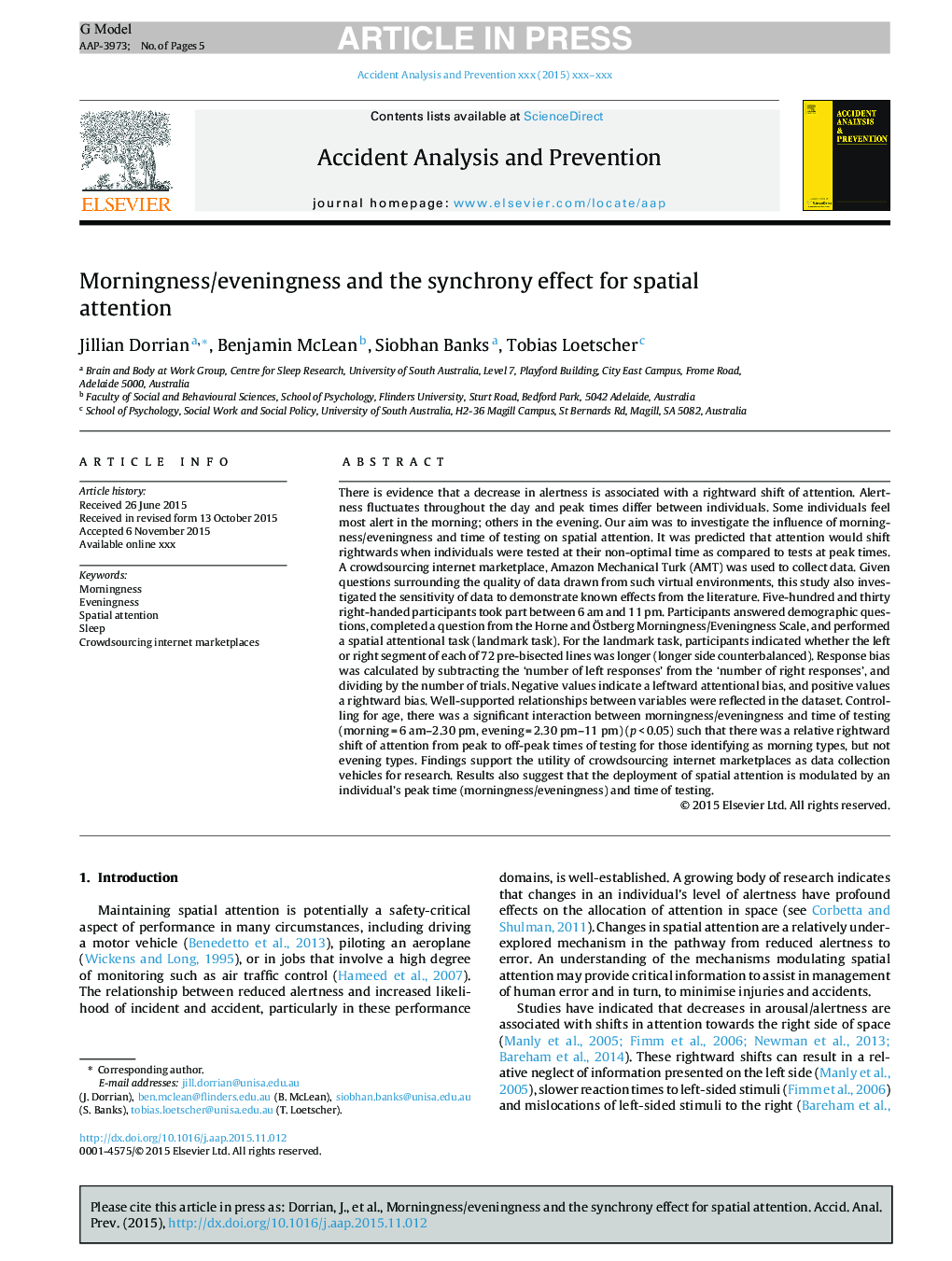| کد مقاله | کد نشریه | سال انتشار | مقاله انگلیسی | نسخه تمام متن |
|---|---|---|---|---|
| 4978765 | 1367780 | 2017 | 5 صفحه PDF | دانلود رایگان |
عنوان انگلیسی مقاله ISI
Morningness/eveningness and the synchrony effect for spatial attention
ترجمه فارسی عنوان
صبح / عصر و اثر همزمان برای توجه به فضایی
دانلود مقاله + سفارش ترجمه
دانلود مقاله ISI انگلیسی
رایگان برای ایرانیان
کلمات کلیدی
صبح، شب توجه فضایی، خواب بازار اینترنتی اینترنت پر سرعت،
موضوعات مرتبط
مهندسی و علوم پایه
مهندسی شیمی
بهداشت و امنیت شیمی
چکیده انگلیسی
There is evidence that a decrease in alertness is associated with a rightward shift of attention. Alertness fluctuates throughout the day and peak times differ between individuals. Some individuals feel most alert in the morning; others in the evening. Our aim was to investigate the influence of morningness/eveningness and time of testing on spatial attention. It was predicted that attention would shift rightwards when individuals were tested at their non-optimal time as compared to tests at peak times. A crowdsourcing internet marketplace, Amazon Mechanical Turk (AMT) was used to collect data. Given questions surrounding the quality of data drawn from such virtual environments, this study also investigated the sensitivity of data to demonstrate known effects from the literature. Five-hundred and thirty right-handed participants took part between 6 am and 11 pm. Participants answered demographic questions, completed a question from the Horne and Ãstberg Morningness/Eveningness Scale, and performed a spatial attentional task (landmark task). For the landmark task, participants indicated whether the left or right segment of each of 72 pre-bisected lines was longer (longer side counterbalanced). Response bias was calculated by subtracting the 'number of left responses' from the 'number of right responses', and dividing by the number of trials. Negative values indicate a leftward attentional bias, and positive values a rightward bias. Well-supported relationships between variables were reflected in the dataset. Controlling for age, there was a significant interaction between morningness/eveningness and time of testing (morning = 6 am-2.30 pm, evening = 2.30 pm-11 pm) (p < 0.05) such that there was a relative rightward shift of attention from peak to off-peak times of testing for those identifying as morning types, but not evening types. Findings support the utility of crowdsourcing internet marketplaces as data collection vehicles for research. Results also suggest that the deployment of spatial attention is modulated by an individual's peak time (morningness/eveningness) and time of testing.
ناشر
Database: Elsevier - ScienceDirect (ساینس دایرکت)
Journal: Accident Analysis & Prevention - Volume 99, Part B, February 2017, Pages 401-405
Journal: Accident Analysis & Prevention - Volume 99, Part B, February 2017, Pages 401-405
نویسندگان
Jillian Dorrian, Benjamin McLean, Siobhan Banks, Tobias Loetscher,
